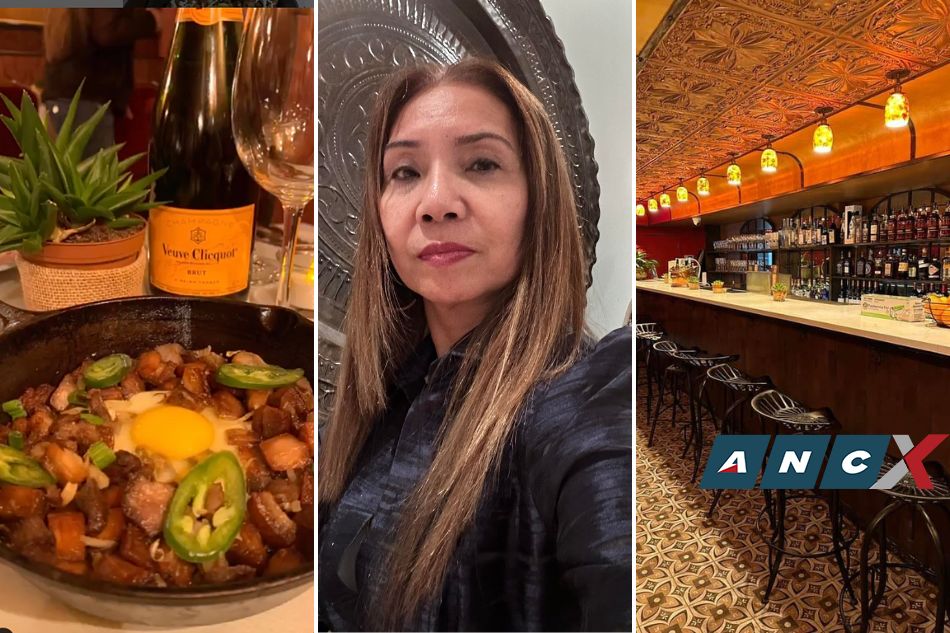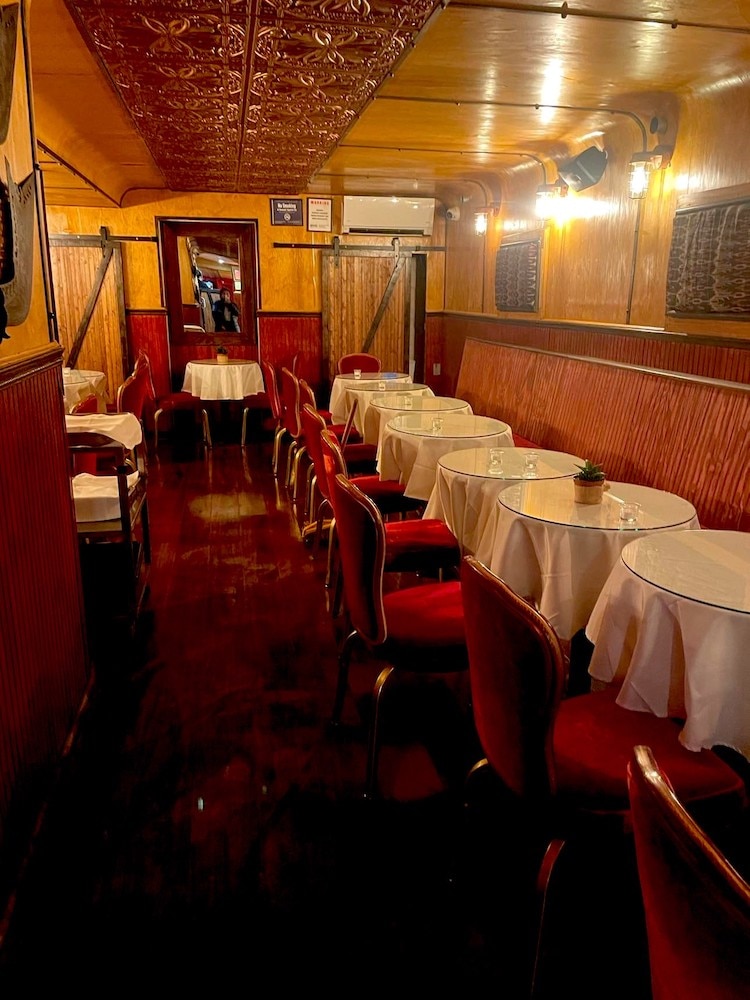Only a month after its opening, Choly, the newest Filipino restaurant and bar in Manhattan, New York, already snagged a positive review from food website Eater New York.
Writer Robert Sietsema, who clearly sounds like he’s no stranger to Filipino food, gave his seal of approval for four dishes on Choly’s menu. The chicken adobo, he said, is a far cry from most versions he has tried, which are “more tart and soupy, swimming in vinegar and soy, with poultry more firm.” He describes Choly’s take on the Philippines’ unofficial national dish as “a lively stew with poultry falling off the bone and little sauce.”
The Spanish inspired lengua estofado, which is quite uncommon in Filipino restaurants in the US, is “the most spectacular thing” he has tried at Choly, says the food writer. The poached ox tongue is so tender, he adds, and “arrives in its wonderfully thin tomato poaching liquid dotted with mushrooms and black olives.”
He describes the pork sisig—which has pork’s face, ears and liver—as “damn near perfect, sizzling in lard in a skillet with an egg cracked atop.”
Sietsema also thoroughly enjoyed Choly’s mongo, a staple dish in many Filipino homes. “One bite of this potent and nutritious porridge ($12) dotted with tidbits of pork and seafood and you may never go back to oatmeal again,” he writes.
As per the pictures in the article, the food writer also ordered halo-halo and leche flan for dessert.
The restaurant owner, the Davaoeña Soledad “Choly” Robillo, says she was thrilled and could not believe it when she found out her one-month-old restaurant got featured in the Big Apple’s dining guide. “[Sietsema] must have visited in the first two weeks of Choly’s opening because the façade of the restaurant looks a little bit different now,” she tells ANCX from New York.
Robillo found it pretty challenging to promote her establishment and get noticed on social media. “I thought, ‘Nobody knows we’re here.’ So what I did was display the Philippine flag right outside the door,” she recalls, smiling. Then news just spread by word of mouth. “Suddenly people started walking in because of the flag. Some are either married to a Filipina, or works with a Filipino.”
Robillo, now in her 60s, has been based in NYC for more than 30 years. A graduate of banking and finance at Saint Scholastica’s College in Manila, she moved to New York upon the invitation of her college classmate and close friend whose family was based there. The Davaoeña initially worked in the hotel industry before moving to Wall Street as a financial advisor. It was only later in life when she decided to finally pursue her dream of becoming a restaurateur.
“I’ve always wanted to have a restaurant because it’s entertaining, fun, and I love to cook,” she shares. The Robillos own a hotel and restaurants in Davao City, so she practically grew up in the hospitality industry. She also looks up to her sister who has successful restaurants in Davao. “I’m really inspired by her success.”
About seven years ago, Robillo had the chance to open a Filipino restaurant and bar in Davao City called Bananeras. But after a few years, she missed her life in New York and so decided to come back.
During the pandemic, Robillo found out that a beautiful bar in Greenwich Village, one of Manhattan’s OG cool neighborhoods, had closed. “I had my birthday party there about 10 years ago,” Choly’s founder recalls. She then talked to the owner, who was happy to offer the space to her. But it took her a year to rebuild the place.
“The place is nice, it’s cozy, romantic, and located in a good neighborhood. It’s a fun place to go to since it’s not only a restaurant but also a cocktail bar,” Robillo offers. Her bar, which is about seven feet long, could sit about 22, and her restaurant can sit 30.
“It's in the area of New York University so it’s a very young community,” the owner says. There’s no known Filipino restaurant yet in the area so this inspired her to open Choly, which is similar to her Davao joint in terms of concept.
Since she has a small kitchen, she keeps to a limited menu. Her appetizers consist of Gambas Pilipino, Sisig, Kinilaw, Chicharon Bulaklak, Lumpia Sariwa, Lumpia Shanghai, and Monggo Soup. Her mains are made up of Bulalo, Kare-Kare, Lengua Estofado, Chicken or Pork Adobo, Lechon Kawali, Pinakbet, Inihaw na Baboy, Steamed Pompano, Crispy Pata, and Pancit.
The Lengua Estofado is her mother’s recipe. “We serve that during holidays and when we have special guests. Everybody loves it,” she says. “It's got some red wine, olives and mushrooms, and it’s sauteed in tomato sauce.”
Monggo is Robillo’s personal favorite and is one her bestsellers. “We soak the mung beans overnight and boil it till it’s really, really thick,” she says. Her monggo is flavored with real shrimp stock and pork fat, but they can also prepare a vegetarian version of the soup if a guest prefers.
Although she has cooks, Robillo is still very hands-on when it comes to food preparation. She says she would like to maintain the authentic Pinoy taste of the dishes they are offering. “Sometimes, my cook and assistant cook would do some modification—like add Kikkoman etc. I stop them from doing it. I want make sure that we use Filipino products.”
The bar’s cocktails include Sampalok Margarita, Guyabano Margarita, and Traditional Filipino Rhum Coke, but they also serve wines and beers (they have San Miguel Beer and Red Horse). This is also one thing that sets her bistro apart from other Filipino dining establishments, says Robillo. “What I'm trying to bring to New York is a sophisticated bar menu. I hired a research consultant to create drinks that would complement our food,” she offers.
New York is famously a melting pot of cultures. What the Davaoeña finds frustrating though is that Filipino food is not top of mind among Manhattanites. “For example, people would say, ‘Let’s have Japanese tonight.’ Some would suggest Chinese, Indian, Mexican, Italian or French. But there's nobody saying, ‘Let’s have Filipino food tonight.’ I want our food to become a staple fare for everybody…like anybody coming from anywhere in the world would say, ‘I feel like eating adobo tonight!’”



